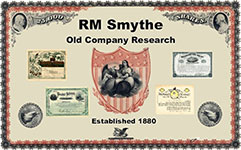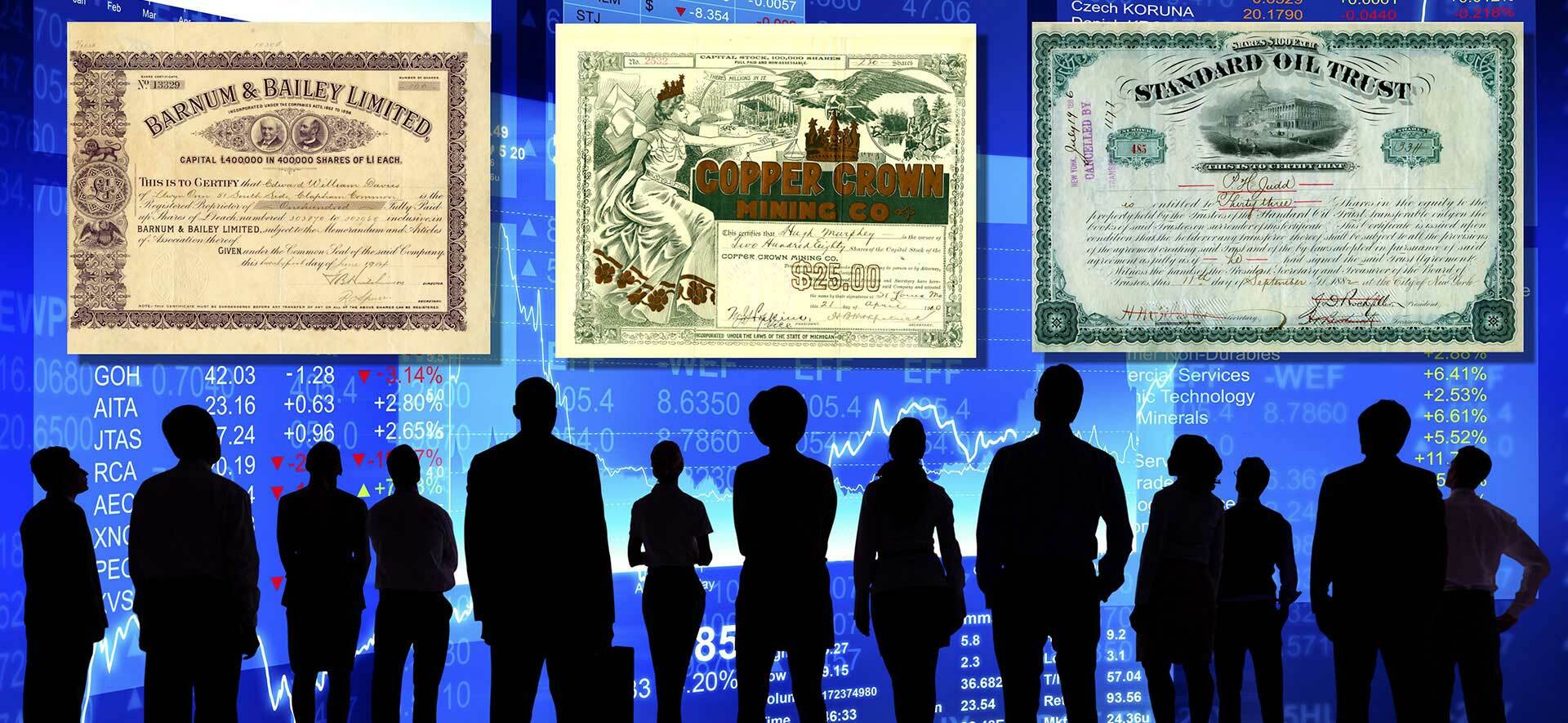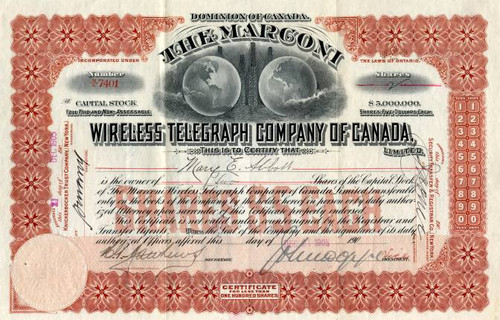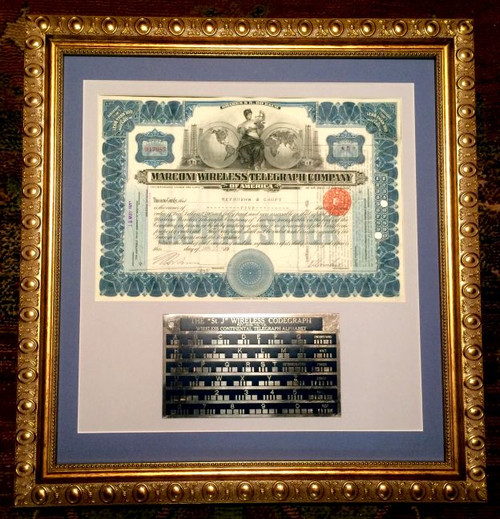Beautifully engraved certificate from Marconi Wireless Telegraph Co. of America. This historic document was printed by the American Banknote Company and has an ornate border around it. This item has the signatures of the Company’s officers.
On May 6, 1912, several significant events occurred. The will of John Jacob Astor Jr., who perished on April 12, 1912 in the Titanic disaster, was probated, leaving his estate to his son, Vincent Astor.

The Irish-Italian wireless pioneer Guglielmo Marconi had been the first to see the advantages—and the commercial possibilities—of equipping ships with wireless telegraph equipment. The technology was based on discoveries made by physicists in the latter half of the 19th century.
In December 1864, James Clerk Maxwell proposed a theory of electromagnetic radiation in a lecture to the Royal Society of London. More than 20 years later, in 1887, Heinrich Hertz in Germany confirmed Maxwell’s theories.
Oliver Lodge was the first to publicly demonstrate the transmission and detection of electromagnetic radiation, at London’s Royal Institution in 1894. But his equipment did not convey comprehensible messages.
The Titanic's wireless telegraph system was operated by the Marconi Company, a pioneer in the field of wireless communication. The Marconi operators, Jack Phillips and Harold Bride, were crucial in transmitting vital messages, including the distress signals on the night the ship sank. Their use of the "CQD" and later "SOS" distress calls, along with the ship's coordinates, helped alert nearby vessels, ultimately saving hundreds of lives. The dramatic rescue of over 700 survivors from the Titanic disaster in April 1912 was made possible thanks to new wireless telegraphy equipment. More than 1500 of the 2224 passengers and crew on board were lost, but four days after the sinking, the Cunard liner Carpathia steamed into New York carrying over 700 survivors.
During World War One the United States government assumed control of the radio industry. After the war government officials balked at returning the American Marconi stations to the original owners, distrusting British control of radio communication due to national security concerns. Led by the U.S. Navy, the government pressured the Marconi companies to transfer American Marconi to a U.S. owner. The American Marconi assets were purchased by General Electric in 1919, which provided the foundation for creating its new subsidiary, the Radio Corporation of America.
History from RM Smythe and Wikipedia.









